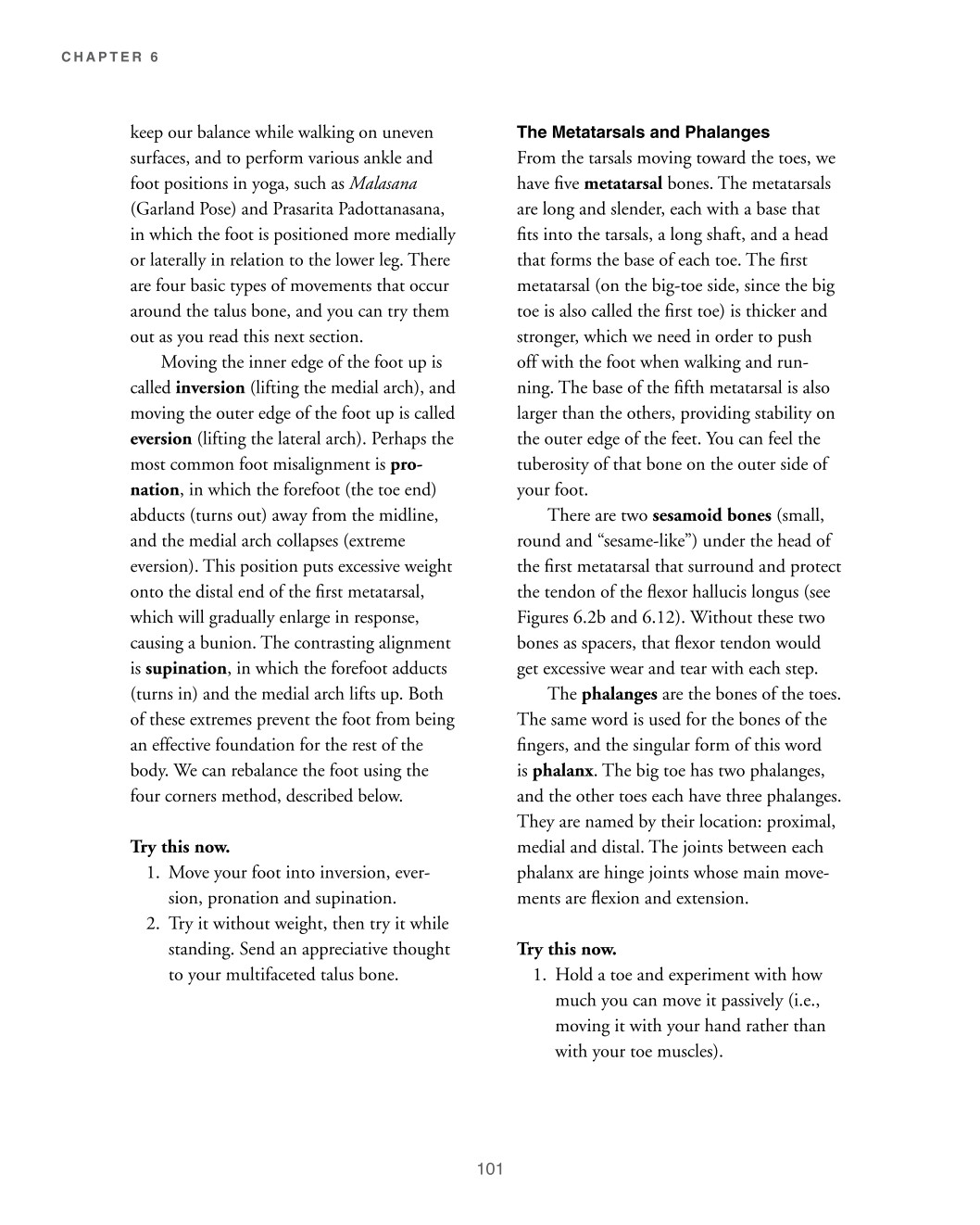

CHAPTER 6
keep our balance while walking on uneven surfaces, and to perform various ankle and foot positions in yoga, such as Malasana (Garland Pose) and Prasarita Padottanasana, in which the foot is positioned more medially or laterally in relation to the lower leg. There are four basic types of movements that occur around the talus bone, and you can try them out as you read this next section. Moving the inner edge of the foot up is called inversion (lifting the medial arch), and moving the outer edge of the foot up is called eversion (lifting the lateral arch). Perhaps the most common foot misalignment is pro- nation, in which the forefoot (the toe end) abducts (turns out) away from the midline, and the medial arch collapses (extreme eversion). This position puts excessive weight onto the distal end of the first metatarsal, which will gradually enlarge in response, causing a bunion. The contrasting alignment is supination, in which the forefoot adducts (turns in) and the medial arch lifts up. Both of these extremes prevent the foot from being an effective foundation for the rest of the body. We can rebalance the foot using the four corners method, described below. Try this now. 1. Move your foot into inversion, ever- sion, pronation and supination. 2. Try it without weight, then try it while standing. Send an appreciative thought to your multifaceted talus bone.
The Metatarsals and Phalanges From the tarsals moving toward the toes, we have five metatarsal bones. The metatarsals are long and slender, each with a base that fits into the tarsals, a long shaft, and a head that forms the base of each toe. The first metatarsal (on the big-toe side, since the big toe is also called the first toe) is thicker and stronger, which we need in order to push off with the foot when walking and run- ning. The base of the fifth metatarsal is also larger than the others, providing stability on the outer edge of the feet. You can feel the tuberosity of that bone on the outer side of your foot. There are two sesamoid bones (small, round and “sesame-like”) under the head of the first metatarsal that surround and protect the tendon of the flexor hallucis longus (see Figures 6.2b and 6.12). Without these two bones as spacers, that flexor tendon would get excessive wear and tear with each step. The phalanges are the bones of the toes. The same word is used for the bones of the fingers, and the singular form of this word is phalanx. The big toe has two phalanges, and the other toes each have three phalanges. They are named by their location: proximal, medial and distal. The joints between each phalanx are hinge joints whose main move- ments are flexion and extension. Try this now. 1. Hold a toe and experiment with how much you can move it passively (i.e., moving it with your hand rather than with your toe muscles).
101